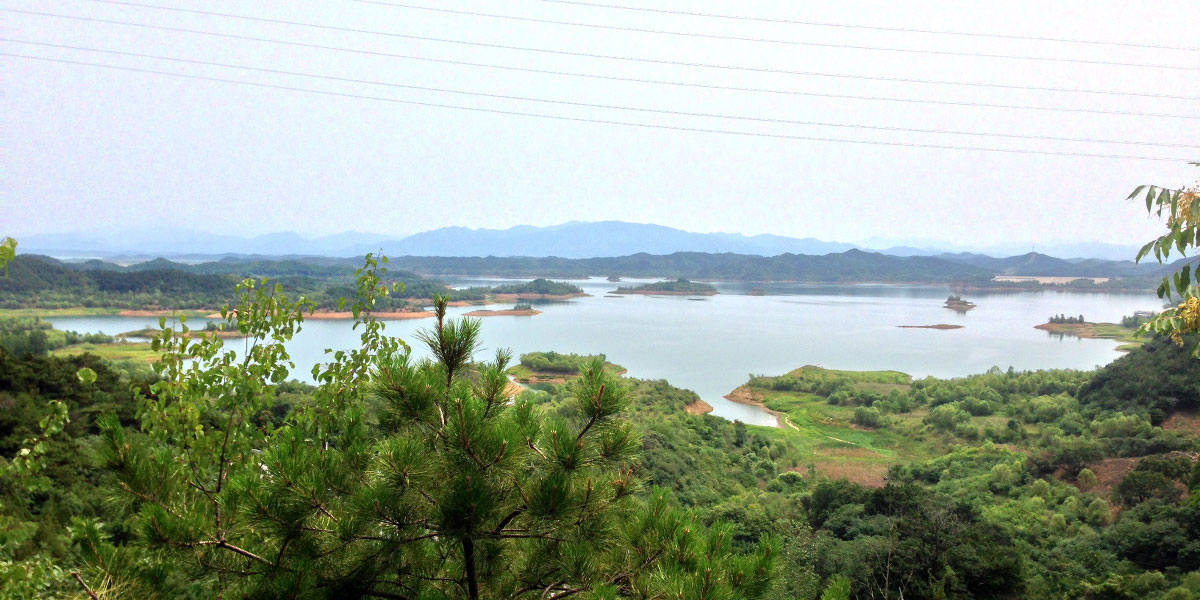
The Miyun Watershed
Details
Introduction
The Miyun reservoir is the largest artificial lake in Asia and considered a highlight in the Yanshan mountains. The Miyun watershed spans an area of 15,788 square kilometres and a maximum storage capacity of 4.375 billion cubic metres. There are two rivers flowing into the Miyun Reservoir: the northwestern branch called Bai He and the north-eastern branch called Chao He which are supplying the reservoir with its water. Originally designed for flood prevention, electricity generation, agricultural irrigation and aquaculture, it had to step up its game when during the 1980s Beijing’s groundwater began to diminish and the quality of Guanting reservoir’s water degraded so much that it was not suitable for human consumption anymore. By 1999, the Miyun Reservoir was supplying 490 million cubic metres of water to the capital and was Beijing’s only source of surface water.
Water for Beijing
The available per capita water usage in Beijing has dropped to 100 cubic meters, much lower than the internationally acknowledged warning line of 1,000 cubic meters per capita, according to the Beijing Water Authority. The water shortage in Beijing has touched water crisis level. Water supply for Beijing depends on surface water, underground water and water diverted from the outside. The water table also dropped rapidly in part of Beijing, it is impossible to use more underground water. Though the city will receive some 1 billion cubic meters of water each year from the South-to North Water Diversion Project, it cannot meet the annual shortage of 1.5 billion cubic meters. The situation urges a better use and protection of reservoirs around Beijing. The Miyun Reservoir, the largest of its kind in north China, is the primary source of drinking water for Beijing residents, and provides more than 60% of the capital’s surface drinking water.
Miyun’s Environmental Challenges
In the 1970s and 1980s the government led large-scale afforestation programs in the watershed in order to reduce erosion and therefore the sediment flow into the reservoir. While these have been largely successful, biodiversity and naturalness of the area have been comprimised over the years as the afforestation projects established single-species monocultures. Nowadays most of the landscape is a mixture of plantations and naturally regenerated vegetation. The natural vegetation, however, due to the degradation of the landscape is itself also often degraded and because of the thin soils stays in a degraded shrubland stage instead of developing into a forest. BFS has started first pilot projects to transform the monocultures into more natural forests but the Miyun watershed covers a large area and much remains to be done.
Political Challenges
The Miyun watershed encompasses two provinces – Hebei and Beijing province. Only â…“ of the watershed lies in Beijing municipality while â…” lie in Hebei. This creates problems as the majority of the benefits the governmental regulations provide go to Beijing while its burden is lying mainly in Hebei. Furthermore the proximity to the city of Beijing and the higher precipitation also raises the average income of a village significantly, further disadvantaging communities in Hebei.  Beijing villagers have greater income generated from the forest compared to Hebei, mainly due to Beijing government-driven subsidies (forest warden salaries) and higher incomes from orchard harvests due to proximity to urban markets.
Steps are now being taken to decrease the inequality but it is a long and slow process.
Livelihoods
The Miyun watershed is not a landscape devoid of people. In fact, many smaller villages exist within the watershed. And while the government has been successful in banning many harmful factories in order to improve water quality, the same cannot and should not be done with the people living there. While many restrictions apply to those villages like a ban on large-scale animal husbandry or the general logging ban in most parts, the government, BFS and many other NGOs are working with the local communities there on creating livelihoods that will not impact water quality while at the same time increase standards of living.
